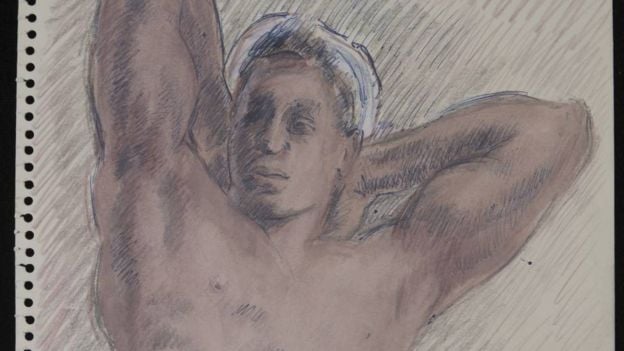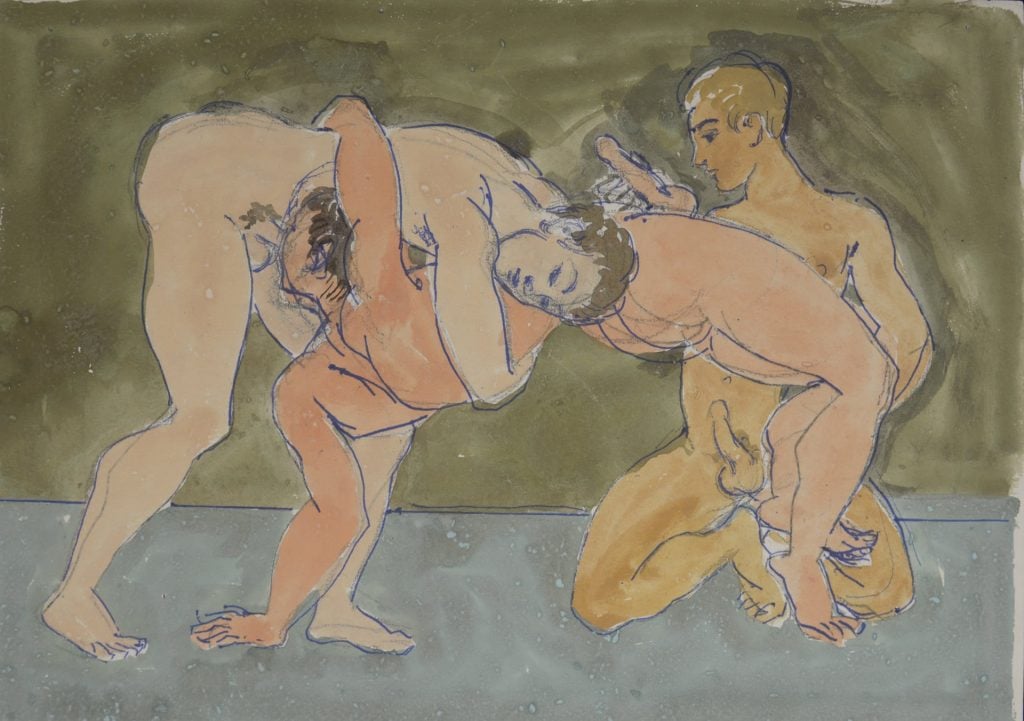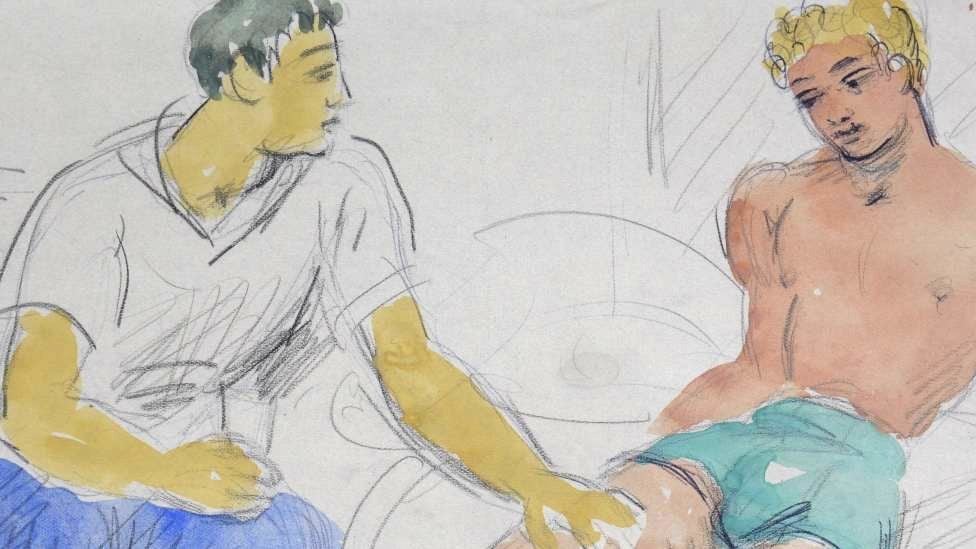Art World
A Trove of Steamy Duncan Grant Drawings Were Thought to Have Been Destroyed. Turns Out, They Were Just Hidden Under a Bed
The drawings of brawny men have been donated to a UK museum.

The drawings of brawny men have been donated to a UK museum.

Sarah Cascone

A long lost collection of erotic drawings by British painter Duncan Grant, hidden under a bed for years, is being donated to the Charleston in East Sussex, a museum that operates out of the home Grant shared with painter Vanessa Bell, his artistic and sometimes romantic partner.
Grant and Bell belonged to the Bloomsbury Group of English writers, artists, and other intellectuals active during the first half of the 20th century. Despite fathering Bell’s daughter, artist and writer Angelica Garnett, Grant was for the most part romantically involved with men.
The 422 drawings are said to be worth £2 million ($2.58 million). Grant drew them in the 1940s and ’50s as a celebration of sex between men and of the male body, with clear influences from both classical Greco-Roman art and the “physique” magazines popular with the gay community of the day.
“Everybody thought they had been destroyed because of its homosexual nature and because they were illegal images,” Darren Clarke, head of collections at the Charleston, told the BBC. “It’s quite a Karma Sutra of Duncan Grant’s sexual imagination.”

Duncan Grant, detail from an untitled drawing (c. 1946–59). Photo courtesy of the Charleston Trust ©the Estate of Duncan Grant, licensed by DACS 2020.
Grant’s lovers included economist John Maynard Keynes, historian Lytton Strachey, and writer David Garnett, who ultimately married Grant’s daughter. His private drawings, therefore, are more than just personal—they offer unique insights into LGBTQ history in the UK, where parliament passed a law criminalizing sexual relations between men just months after Grant’s birth.
The Charleston is launching a crowdfunding effort to aid its reopening on October 16, a date chosen to mark the 104th anniversary of the day the unlikely trio of Grant, Bell, and David Garnett moved into the home.
“There haven’t been many joyous moments in 2020 for anyone running a cultural organization, or many people in the world,” the museum’s director, Nathaniel Hepburn, told the Guardian. “Getting that email, having that phone conversation, and then seeing the drawings and realizing how important they were going to be… it was certainly a high point of the year.”
In 1959, Grant gave the drawings to fellow artist Edward Le Bas, enclosed in a folder that warned “these drawings are very private.” Legend had it that after Le Bas died, his family destroyed the works to protest Grant’s reputation. Fortunately, it turns out that Le Bas actually gave them to another member of the Bloomsbury Group, gallerist and painter Eardley Knollys.
From there, the illicit drawings passed to framer Mattei Radev, who became associated with Bloomsbury—he is believed to have dated author EM Forster—after immigrating to London from Bulgaria in 1950. His partner, retired theater designer Norman Coates, is the one who kept the drawings stashed under a bed and ultimately made the decision to donate them to Charleston.
“They need to come out of the closet now, and be considered and looked at and thought about,” Coates told the BBC. “they are a serious collection—absolutely beautiful.”
See more of Grant’s drawings below.

Duncan Grant, detail from an untitled drawing influenced by Greco-Roman art (c. 1946–59). Photo courtesy of the Charleston Trust ©the Estate of Duncan Grant, licensed by DACS 2020.

Duncan Grant, detail from an untitled drawing (c. 1946–59). Photo courtesy of the Charleston Trust ©the Estate of Duncan Grant, licensed by DACS 2020.

Duncan Grant, detail from an untitled drawing (c. 1946–59). Photo courtesy of the Charleston Trust ©the Estate of Duncan Grant, licensed by DACS 2020.